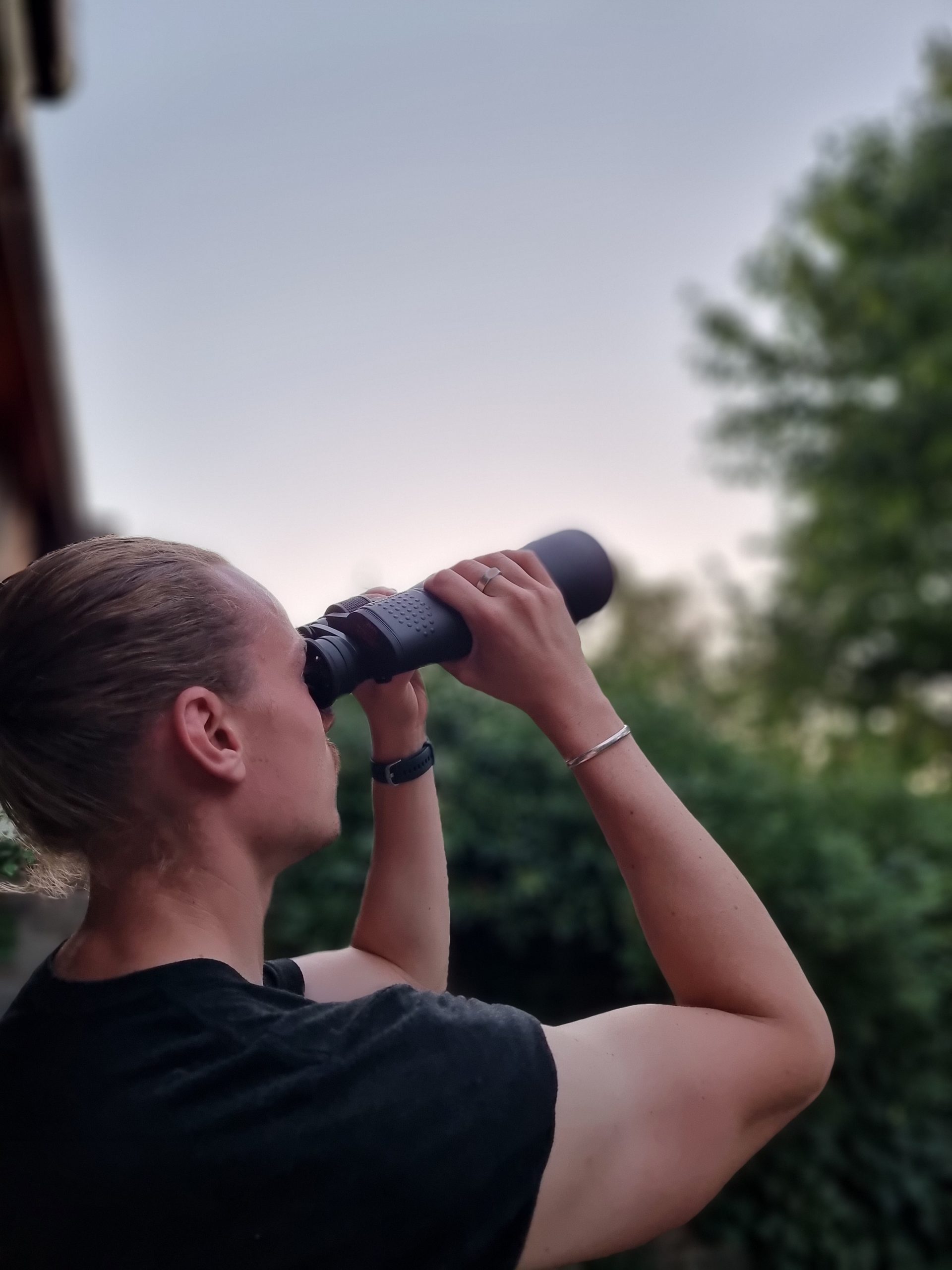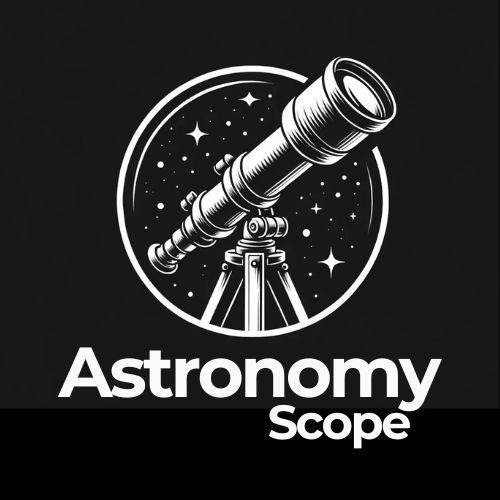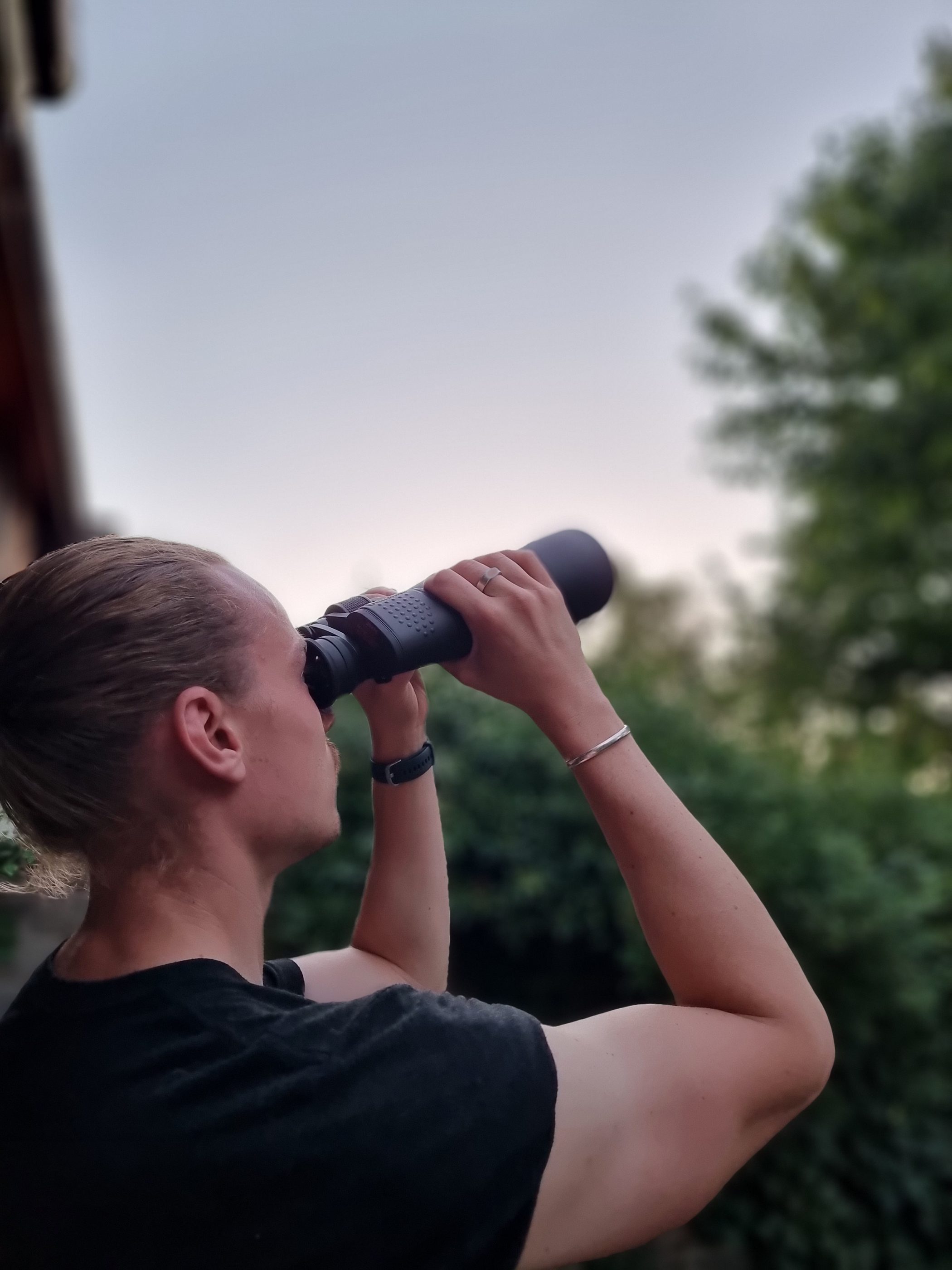The worlds’ oceans are full of wildlife and mysteries that tend to pass quickly. Telescopes can help capture the wonders that are constantly happening across the sea, but which one is worth the purchase?
With a bit of help from a telescope and a little altitude, you can get a close-up view of the happenings across the ocean water.
Finding a telescope that fits your needs can be challenging as there are many different features to sort through.
Various factors such as magnification, lens quality, product material, and accessories all affect the quality of the telescope.
This article will dive into three of the best telescopes for ocean viewing, along with their particular specifications.
Here are the top three picks:






Vortex Optics Razor 27-60×85 HD Angled Spotting Scope
The Vortex Optics Razor is one of the highest quality options on the market – it will make sure your eyes stay on the prize.
And while this is one of the more expensive options on the market, the pros of this telescope greatly outweigh the cons by far.
It also has the potential to last you a lifetime with the quality of its build.
- The Razor HD 27-60x85 Angled Spotting Scope employs high-end optical technology, precision craftsmanship, and ultra-sleek functionality to make the Razor one of the finest spotting scopes on the market. A built-in sunshade pulls out to reduce glare.
- Triplet Apochromatic lens combined with high density, extra-low dispersion glass delivers unparalled resolution and color fidelity. XR Plus anti-reflective coatings were applied to the lenses to yield maximum brightness for critical low-light glassing.
- A smooth helical focus dials in razor sharp resolution and keeps the scope trim for easy packing. The multi-position eyecup twists up to give you proper eye relief and the locking collar allows you to rotate the scope to acquire the best viewing angle.
- O-ring sealed and argon purged, the Razor HD delivers waterproof and fogproof performance. Armortek coatings protect the lenses from oil, scratches, and dirt. Rubber armor provides extreme durability.
- Backed by our unlimited, unconditional, lifetime, VIP Warranty. A fully transferable promise to repair or replace your item if it becomes damaged/defective. Does not cover loss, theft, deliberate damage or cosmetic damage that doesn't hinder performance.
Features & Specifications
- Eye relief – 16.7mm-17.0mm
- Magnification – 27-60x
- Eyepiece position – Angled
- Close focus – 16.4’
- Weight – 65.6oz
- FOV yards/degrees – 117’-68’/2.2°-1.3°
- Length – 15.5”
Pros
Detailed Views
This spotting scope will be able to provide detailed views of the ocean’s surface, allowing you to catch any action at a glance.
You’ll find that the combination of an apochromatic triplet lens with a high density, extra-low dispersion glass yields some of the best resolution and color accuracy.
Anti-Reflective Armortek Coatings
Furthermore, the Armortek lenses were treated with anti-reflective coatings to provide optimal brightness in most neutral weather conditions.
These coatings will also guard the lenses against grease, scratches, and more.
With or without glasses, a multi-position eyecup twists up to provide optimum eye relief making long viewing sessions a breeze.
Fully-Waterproof
The spotting scope is waterproof since it is O-ring sealed and argon purged.
Tripod Mounting Collar
You can also utilize the Razor’s tripod mounting collar, which allows you to spin the spotting scope body for increased viewing versatility.
Multiple Prisms
When it comes to prisms, the manufacturers state you’re dealing with a typical Porro prism optical path, and the angled version has another prism that redirects light toward the central axis at a 45-degree angle.
Additional Accessories
Suppose you’re wondering what accessories come with this telescope.
In that case, you’ll find a rubberized objective cap, an eyepiece mount cap, an objective lens cover, a cleaning cloth, and a custom-fitted encasement for the entire instrument.
Cons
Inferior Bag
This spotting scope is definitely top of the line in terms of quality, but the bag that comes with it doesn’t really make the cut.
The design of the bag isn’t very ergonomic, and many users note that you’d be better off purchasing another bag.
Although this issue may seem minimal, considering the price of the telescope, this shouldn’t be a complaint.
Price
On another note, the price of this telescope may be a dealbreaker for some, as they can cost well over $1,500 yet, would easily last you a lifetime with proper care.
Magnification
Furthermore, there are many other Vortex telescopes on the market, and this one, in particular, has a narrower magnification range than some previous models.
Although 27-60x may work for some, there are many individuals who prefer a more comprehensive magnification range.
Celestron Ultima 80 Straight Spotting Scope
If you’re looking for high-quality focus detail, excellent magnification, and affordability, the Ultima 80 Spotting Scope from Celestron could be a perfect choice.
Overall, this telescope may come with a few quirks, but it’s one of the best budget-friendly options on the market right now.
This would be a great spotting scope for casual ocean enthusiasts who are looking to get started without breaking the bank.
- ULTIMA STRAIGHT SPOTTING SCOPE: The outdoor enthusiast’s choice is our great all-around spotting scope with an 80mm objective lens and a straight-through viewing angle. Perfect for observing nature and long-distance viewing.
- INCLUDES ESSENTIALS FOR BETTER VIEWING: Celestron Ultima 80 includes an extended tripod mounting plate, a zoom eyepiece with an integrated T-adapter for digiscoping, a carrying case, an eyepiece lens cap, an eyepiece port cover, a soft carrying case, an eyepiece pouch, a lens cloth, and an instruction manual.
- MULTI-COATED OPTICS: Every lens surface is coated multiple times with anti-reflective coatings to improve the color and contrast of images and maximize brightness, so you can enjoy brighter and sharper images, even when ambient lighting conditions are dim.Prism Coatings:FMC
- SHARP ZOOM EYEPIECE FUNCTION: Our Ultima 80 Spotting Scope features a large focus dial, allowing you to bring your subject into razor-sharp focus before it moves away. The included zoom eyepiece helps you zero in for detailed views of distant subjects in seconds.
Features & Specifications
- Eye relief – 18mm
- Magnification – 20-60x
- Eyecup – folding
- Close focus – 26.2’
- Weight – 5lbs
- FOV yards/degrees – 105’-53’/2.0°1.0°
- Length – 19”
Pros
Visibility
With a stellar 80mm lens and a straight-through viewing angle, this telescope is a fantastic spotting scope for the ordinary outdoor enthusiast.
From a safe distance, you’ll be able to detect even the most minor changes on the ocean’s surface.
Keeping track of your target is easy given the telescopes tripod capabilities and crystal clear lens.
Nevertheless, it’s important to note that as you increase magnification, you will lose some clarity.
Anti-Fogging
Ultima 80 has been filled with dry nitrogen gas and coated to avoid internal lens fogging.
T-Mount Adapter
The straight spotting scope also comes with a T-mount adapter for digiscoping, allowing you to capture brilliant, crisp photos.
You can attach your DSLR camera with the provided T-ring to your scope, and you can shoot photographs with ease.
Large Exit Pupil Diameter
The comparison between minimum magnification and the lens sizes of this scope is vastly different, resulting in a large exit pupil diameter.
With telescopes, the larger the exit pupil diameter, the brighter the viewing you receive.
Large Center Lens
The massive center lens will provide your eyes with well-defined and sharp visuals.
Another advantage of the Ultima 80mm is that its core Achromatic lens delivers over 70 percent more colorful images than a 60mm lens would.
Additional Accessories
You’ll also find numerous accessories with the Ultima 80, such as a tripod adapter that allows you to achieve more stable maneuverability.
After mounting your ultima scope, you can swiftly and accurately dial in on your next target on the water.
Durability
Furthermore, the housing of this telescope is quite durable and is perfect for land viewing or taking it out on the water as it’s entirely waterproof.
Cons
Even though this spotting scope has a ton to offer, there are still a handful of concerns.
Magnification Image Quality Issues
First and foremost, the provided magnification may not be suitable for some viewers as the Ultima 80 is known to lose image quality with higher magnifications.
This could be a downer for some that are hoping for a crystal clear image at maximum magnification.
Flares
Furthermore, this may not be a very prominent issue, but the telescope can also produce flares from time to time, putting a damper in finding the perfect viewing angle.
Excessive Force
If you plan on traversing rough terrain for the perfect viewing spot, you may want to consider this telescope’s durability.
The housing of the Ultima 80 is rubber-coated and will easily protect against minimal damage or impacts, and it may not do so well with any kind of excessive force.
Separate Accessory Costs
Moreover, many of the most sought-after accessories don’t come with the base purchase of the telescope itself.
So, accessories such as the tripod, DSLR adapter, and t-ring will have to be bought separately.
Vanguard Endeavor HD 82A Angled Spotting Scope
If you’re in search of exotic wildlife on the ocean’s surface, you might want to consider the Endeavor HD 82A from Vanguard.
Well known by many, the Endeavor HD series from Vanguard utilizes several extremely high-end optical components and capabilities; they nonetheless cost slightly less than most other high-quality telescopes.
- Extra-low Dispersion glass (ED) for accurate color rendition & bright, sharp images, and Bak4 phase-coated prism with fully multi-coated lenses
- Rubber armored magnesium body with built in sunshield to eliminate glare in direct sunlight. Dual focus wheel for fine and course adjustment
- Detachable angled eyepiece with soft, comfortable rubber eyecup and long eye relief
- 100% waterproof and fogproof
- Zoom Magnification: 15-45x, Objective Lens Diameter: 65mm, Field of view: 144 ~ 68 ft/1000 yards, View angle: 2.75 ~ 1.3 degrees, Near focus: 14.8 ~ 18 feet, Eye relief: 19 ~ 20 mm, Weight: 51 ounces
Features & Specifications
- Eye relief – 19-20mm
- Magnification – 20-60x
- Minimum focus distance – 14.7”(20x) and 18”(60x)
- Weight – 63.8oz
- FOV at 1000 yards – 330’-156’
- Length – 15”
- Objective Lens Diameter – 82mm
Pros
Build Quality
The company didn’t take any shortcuts regarding build quality; the use of Vanguard’s Extra-low Dispersion glass and the BAK4 roof prism significantly lower chromatic aberrations, which provides exceptionally sharp visuals.
The primary chassis is made of magnesium, which puts the build quality of this telescope above many others.
This material might come a little more expensive, but it’s often regarded as superior to aluminum which can be found within many more affordable alternatives.
Multiguard Coatings
Furthermore, the MultiGuard coatings incorporate numerous layers of anti-reflective elements, resulting in excellent light transmission.
Mounting Plate
If you’re looking to add a tripod to your setup, the included mounting plate is attached to the body.
The mounting plate dimensions are 6.5×3.8cm and will accommodate most standard tripods for spotting scopes.
O-Ring Protection
You’ll never have to worry about debris, water, or fog muddying up your viewing experience, as the Endeavor HD’s O-rings ensures all of the telescopes’ internal components are protected from outside elements.
Moisture Reducing
Vanguard has also replaced the internal air with dry gas, such as nitrogen, in an additional attempt to reduce moisture inside the scope.
This moisture-free environment within the telescope also avoids rusting and will help extend its lifespan.
Dual-Focus Controls
Furthermore, the telescope comes with dual-focus controls that are equipped to handle quick visual tuning adjustments.
Built-In Sun-Shield
You’ll also find a built-in sun shield that reduces glare in addition to an angled eyepiece that’s detachable and has a rubber eyecup as well as a lengthy eye relief.
Cons
Magnification & Image Quality
This telescope comes with many great features, but there are a few cons regarding its magnification and image quality.
Between 20x and 40x, the Endeavor HD provides a stellar image, yet as you zoom beyond 40x, the image starts to deteriorate rather quickly.
Unfortunately, it’s bad enough that by 60x, you’ll notice quite a bit of a blur that may be distasteful for some viewers.
Objective Cover Slips
The tethered objective cover slips on and off with no press-stud fasteners.
While it’s a good fit, it occasionally comes off when you tote the scope around, perhaps causing damage to the objective lens when you think it’s safely covered.
Optical Quality
There are a few notable peculiarities concerning this telescope’s optical quality.
Many individuals explain a “tunnel effect” that occurs with zoom eyepieces at lower magnifications.
The picture appears as a circle at the end of a short black tunnel, which may be an irritating feature for certain people.
Although the telescope has a few issues, the pros outweigh the cons, and the Endeavor HD from Vanguard would be an excellent purchase for any ocean viewing enthusiast.
Ocean Viewing Telescope Buyers Guide
Below I cover some of the primary questions that you may, or would want to ask, to ensure you get the best value for money and the right scope to meet your needs.
What Features To Look For In A Telescope For Ocean Viewing?
If you’ve learned anything from this article, one of the most critical characteristics of telescopes is their magnification.
In correlation with that, some telescopes may have issues with blurring flares or just an overall poor image.
So, if you’re looking to catch the brief and exciting moments the ocean has to offer, you want to make sure you choose a telescope with the highest quality of magnification.
Furthermore, the quality of the scope’s mounting plate and stand are essential as well.
If you have a weak plate or tripod, you could have trouble honing in on points of interest across the ocean’s flowing surface.
As previously mentioned in this article, some telescopes can have an unsavory “tunnel effect” that can make fine-tuning magnification a bit difficult, including a less seamless user experience.
What Makes A Telescope Good For Ocean Viewing?
First and foremost, a telescope with a wide magnification that doesn’t encounter blurring issues is optimal.
Some may not consider that many prefer to view the ocean from higher altitudes to get a better viewing angle on the ocean’s surface.
If you expect to utilize maximum magnification, you could be met with a low-quality image.
Some telescopes may boast a wide magnification range, but the viewing quality must be upheld as well.
You’ll also want to find a telescope that can manage light flares as the sun can easily ruin your viewing experience.
Moreover, due to the ocean’s moving surface, it’s crucial your telescope’s magnification is built to handle moving objects easily.
You can accomplish this by having a durable tripod that doesn’t budge and a solid mounting plate if it’s needed.
For those that prefer to be on the water and in the action, then you’ll want to ensure you’re carrying waterproof equipment.
Getting any kind of fluid inside your telescope can cause quite a bit of damage.
If you’re out on the open water, make sure you have a scope that’s built to be water and moistureproof for long-lasting use and reliability.
Final Verdict
With the ever-changing formation of the ocean and its vast wildlife, there are endless opportunities to see and capture breathtaking visuals.
The naked eye can only pick up so much detail from a distance, but with the use of a proper telescope, you can witness one-of-a-kind moments on a regular basis.
Of course, with the pros and cons of the scopes listed in this article, each has a range of features covering many different viewing needs and interests.
But for me, I wouldn’t look any further than the Vortex.
And I’d buy it from Amazon too where they seem to offer the best price 👇
Just be sure whatever you do decide to buy you take proper care of it. That should ensure it will last for many years to come.
Related guides you may want to see:

Hey, my name is Jeremy. I’m a passionate and seasoned astronomer who loves nothing more than observing the night sky. I also love researching, learning, and writing all things Space and the Universe. I created Astronomy Scope to share my knowledge, experience, suggestions, and recommendations of what I have learned along the way while helping anyone to get into and maximize their enjoyment of the hobby.

